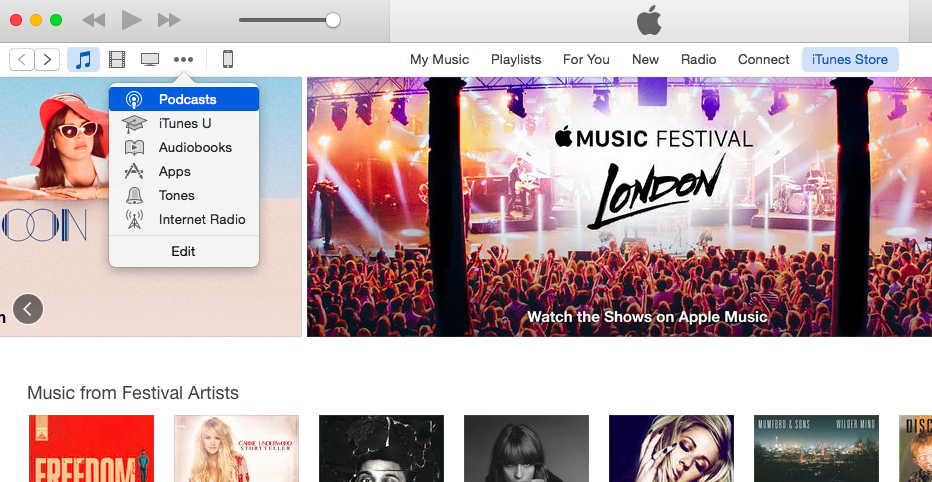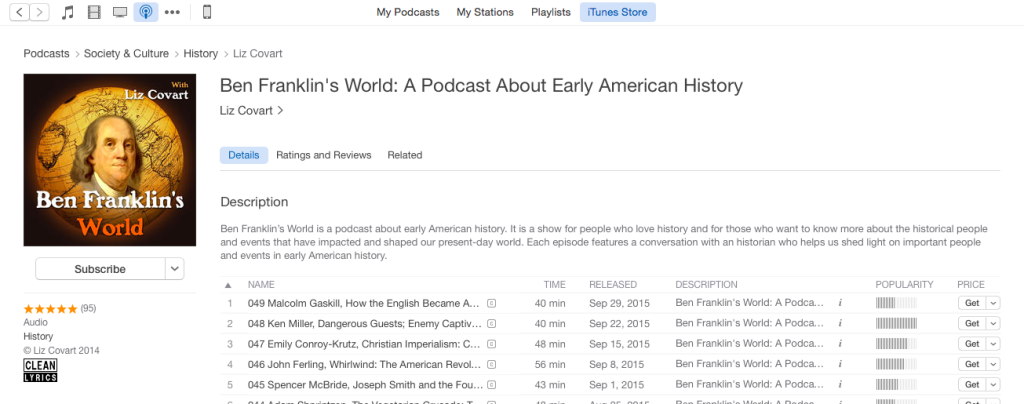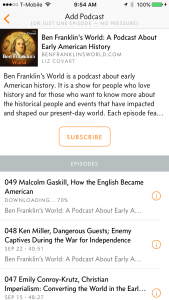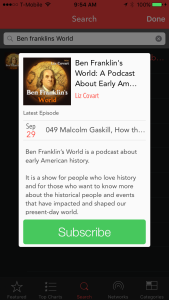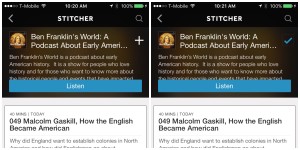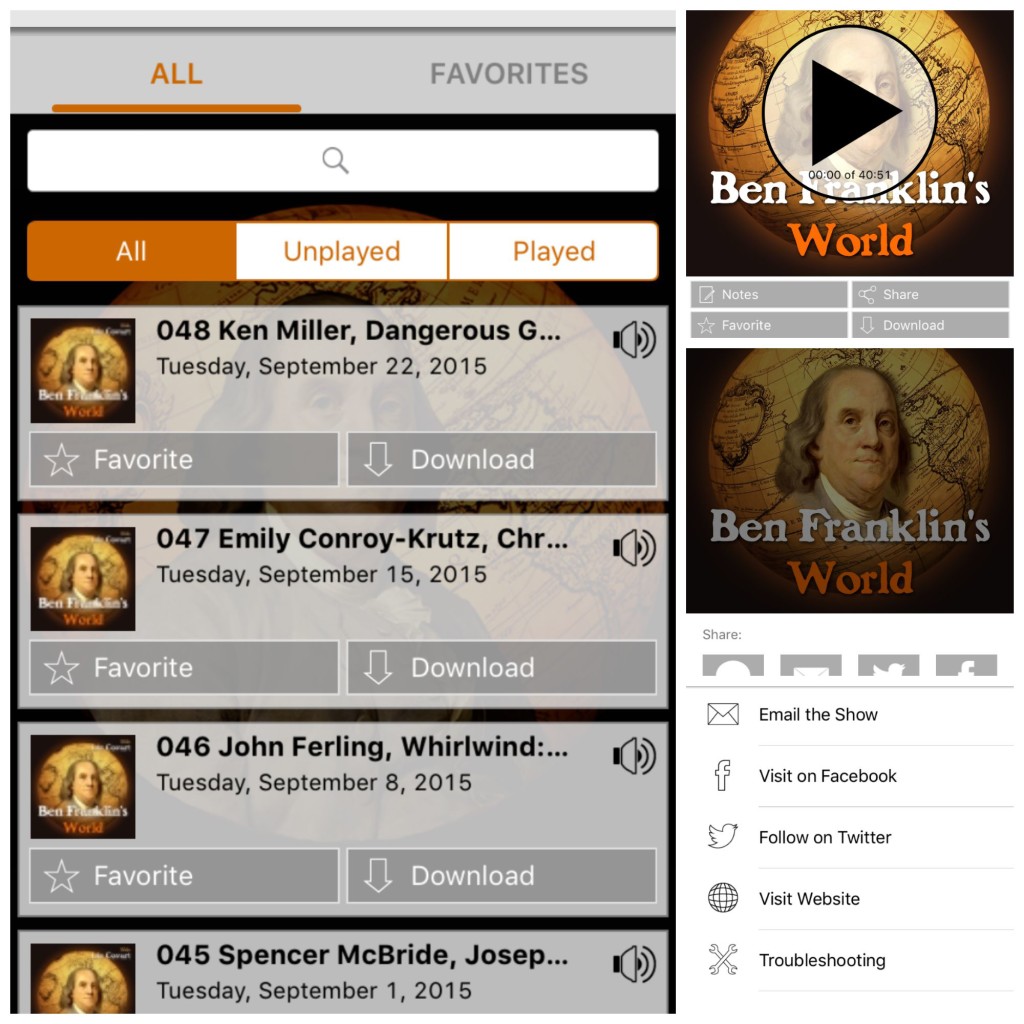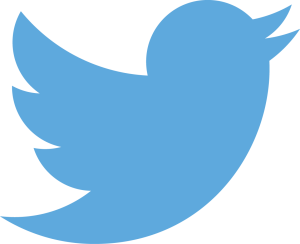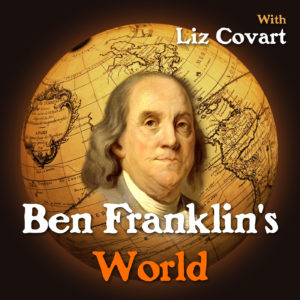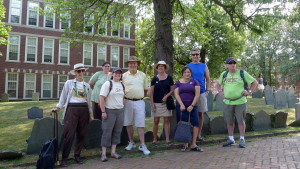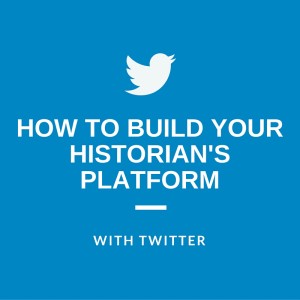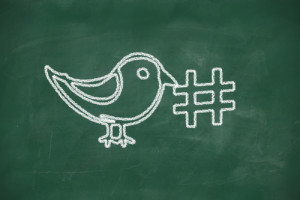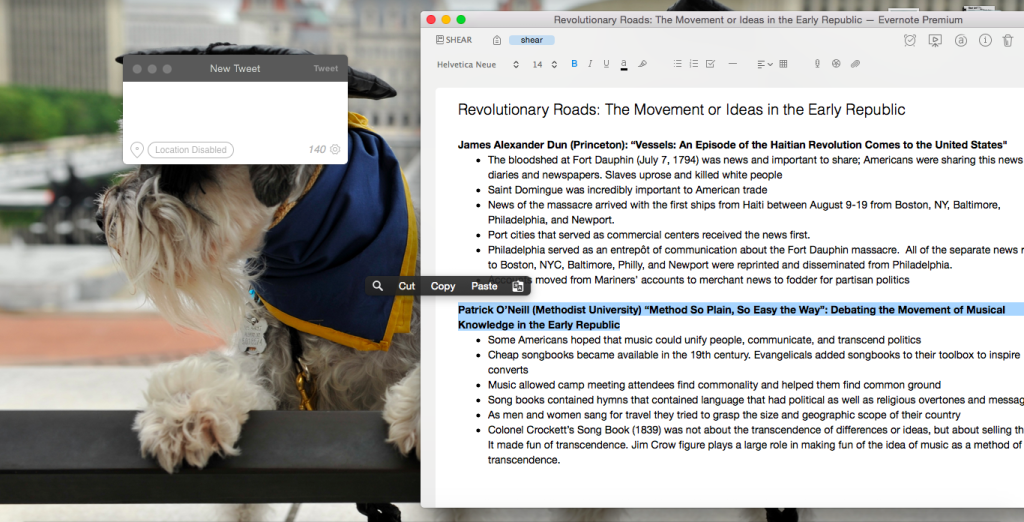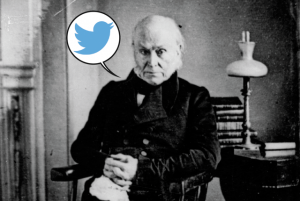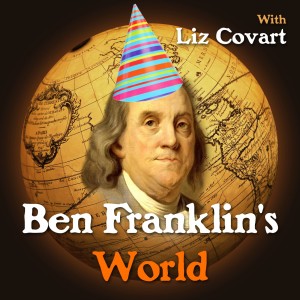 Happy Birthday Ben Franklin's World!
Today marks the 1-year anniversary of Ben Franklin's World: A Podcast About Early American History.
Happy Birthday Ben Franklin's World!
Today marks the 1-year anniversary of Ben Franklin's World: A Podcast About Early American History.
I thought it would be fun to discuss the current status of the show, how it has evolved over the last year, and how I intend to experiment with, and add to, this digital history project over the course of the next year.
By the Numbers
Statistics as of October 7, 2015, 7:59am
Number of Episodes: 55 published; 61 recorded
Total Downloads: 333,374 (this includes the Spreaker & iHeartRadio stats, which I always forget to consult)
E-mail Subscribers: 824
Listener Community Members: 227
Monthly Download Total October 2014: 288
Monthly Download Total September 2015: 43,829
Evolution of the Podcast
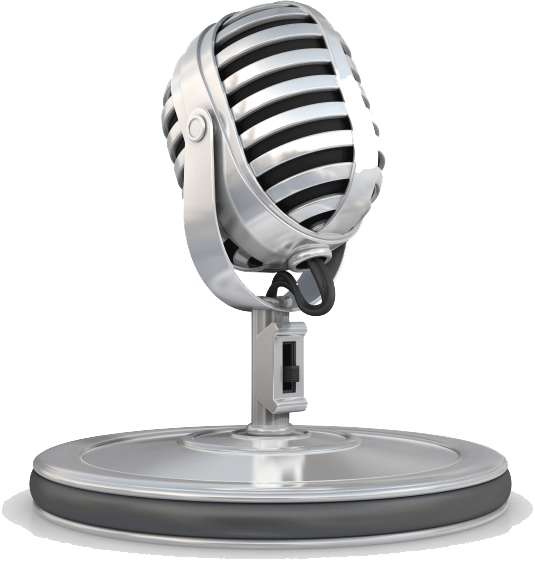 I started Ben Franklin's World to see if a podcast could create wide public awareness about the work of professional historians. Over the last year, the show has positively answered this question. It has also proven that people are interested in professional historians' scholarship and that our work enriches their lives.
I started Ben Franklin's World to see if a podcast could create wide public awareness about the work of professional historians. Over the last year, the show has positively answered this question. It has also proven that people are interested in professional historians' scholarship and that our work enriches their lives.
However, Ben Franklin's World has also become more than a platform to generate interest in historical scholarship.
Educational tool: High school teachers and college professors incorporate episodes into their classroom teaching.
High school and college students listen to the show to study for their exams and papers. One high school student told me that she passed her history exam in part because she listens to the podcast.
Graduate students use episodes to study for their comprehensive exams.
Professional development and service tool: Potential guests note Ben Franklin's World as part of their marketing strategy in book proposals. Guests use show and episode download numbers in their tenure and promotion packets. Many professional historians listen to the show to keep up to date with early American historiography.
Networking tool: Not only have I had 30-60 minute conversations with many great historians, but historians have connected with each other as a result of hearing about each other's work.
Community building tool: Over 200 listeners have joined "Poor Richard's Club," a community for Ben Franklin's World listeners on Facebook. Members of the community share articles, discuss history, and interact with each other based on their shared interest in early American history.
Ben Franklin's World serves all of these functions and yet I did not create the podcast to serve these purposes. Like many digital history projects it has taken on a life of its own. It will be fun and exciting to see how the show continues to evolve beyond its original purpose.
Experiments & Goals for 2015-2016
 Three big projects will dominate my attention over the next year: Monetization, community development, and time management.
Three big projects will dominate my attention over the next year: Monetization, community development, and time management.
Monetization
Can Ben Franklin's World become a self-supporting project? Over the next year, I intend to investigate ways to make Ben Franklin's World pay for itself. Experimentation begins later this month when I will launch my first crowdfunding campaign.
Community Development
I have been surprised by how many listeners want to interact with me via Twitter, Facebook, or e-mail and by how many listeners want to spend time hanging out with other listeners in Poor Richard's Club. The community-building aspect of Ben Franklin's World requires more attention. This unintended aspect of the show could further historians' efforts to engage with the public and, in turn, the public could help us with how we write about, talk about, and interpret history.
Presently, I am halfway through an online course on how to build and develop online communities on Facebook.*
Time Management
I love working on Ben Franklin's World, but this work has come at the expense of my scholarship. As much fun as the podcast has been, and continues to be, I miss researching and writing about history.
I started Ben Franklin's World as an historian with a podcast. A year later I am a podcaster who happens to be an historian. I do not regret the quick success of the show or the challenges it has created for me, but I am also not intellectually satisfied by working on the podcast alone. Over the next few months, I need to find a way that I can continue to produce a high-quality show and work on my book projects.
Share Your Story
Do you listen to the show? What has your favorite episode been?
Do you have tried and true strategies I could use to better manage my time?
Listener Testimonials
"I am not an historian, but subscribe to many history-related podcasts. Liz's is one of my favorites. It is fun and provides historical views and perspectives that I trust."--krrat
“If my teachers had been half this engaging I would not have slept through most of history class.”—Sheryse Lang
“If you remember a really great university history class— not the one where you fell asleep in the back row, but the one where you got their early to get the good seats in the front row—that’s Ben Franklin’s world.”—Friscodog
"I LOVE Ben Franklin's World podcasts. Liz Covart's enthusiasm for history is contagious! I have always enjoyed learning about American History, but I can't emphasize enough how much I look forward to each new episode."--Pat Kerper
*I am taking the "Facebook Groups Rock!" course by Katie Krimitsos. Her course is closed at the moment, but this special link works in case you want to take the course too. This is not an affiliate link.


